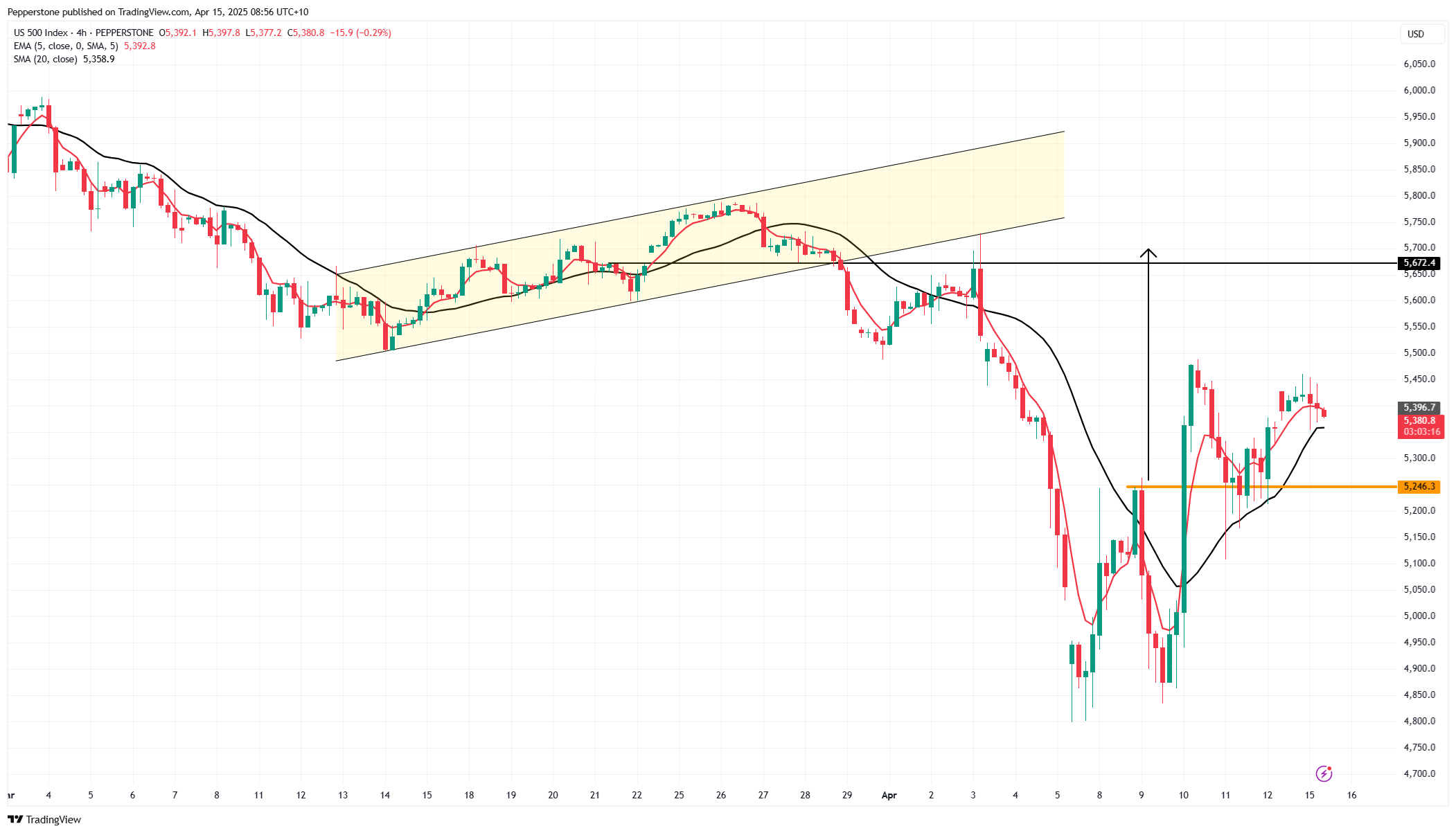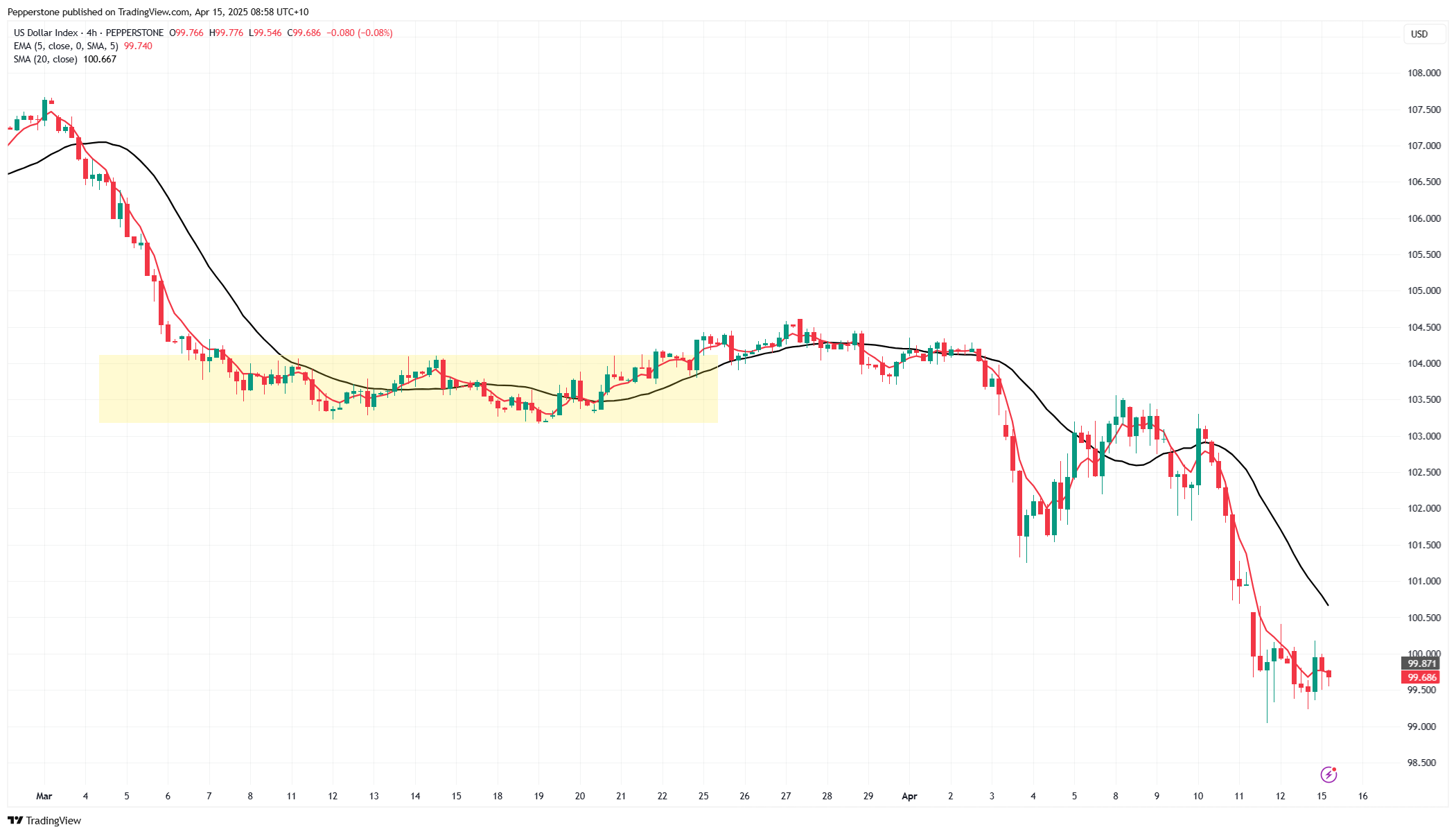- English
- عربي
Calmer Trading Conditions with Equities Rising, USD Lower, and Treasury Rally

There has been some focus on tariff headlines, both on the possible temporary exemptions and the dates for sectoral tariffs - although what has been heard has been confusing, and in places contradictory, and as such, many have stayed well clear of trading headlines, preferring to be guided by the only opinion that counts – price. That said, getting a defined read on how the collective wisdom in the market interprets tariff news is never an exact science anyhow as positioning – either through gross exposures or the level of legacy portfolio hedges - plays such an important role in the intraday flows.
EU equity has been well traded, with the DAX getting the strongest look from clients, with the buyers in control and the index settling not far off the highs. In US equity, we saw the S&P500 cash close 0.8% with 86% of S&P500 co’s higher on the day, backed by solid earnings from Goldman Sachs and tailwinds from the tariff news affecting select industries (such as auto's) - however, on review, the price action at an index level was choppy and hardly compelling to the fast money players to ramp up bullish exposures just yet. The daily timeframe showed indecision from market players, with the intraday tape portraying clear chop.

Traders have reduced volatility hedges, with the VIX index -6.6 vols to 30.9%, with many in the options world looking for a move back to 25%. SPX 1-week ATM implied vol has been pulled to 27% (-8 vols), which equates to implied daily moves of -/+1.7% over the coming week. Volatility has a floor though as elevated risk remains – either through the possible reaction to the incoming US economic data and the pricing of US recession risk or through the tariff negotiations within the 90-day pause, where Trump has seemingly lost a large degree of leverage, with other nations having seen his sensitivity to market forces and as such have seen his hand.
US Treasuries have found a strong bid on the day, with yields 11bp to 15bp lower across the curve - in turn, this has reduced some concern about a term premium shock, or the notion pushed by some that China was distorting the long end of the Treasury curve. Perhaps Treasuries will start to play a more defined role as defense in the portfolio again, but a 1-day move won't convince the market to give up on gold as the default hedge against the risks on the horizon.
On the day, it seems that Fed Gov Waller's dovish lean has provided tailwinds to the buying in USTs, with calls that he expects inflation to be temporary and if there we see increased evidence of recession risk that the Fed will be pro-active in cutting rates – a factor echoed in US rates/swaps pricing, with Sept 2026 SOFR futures (i.e. the low point in implied fed pricing) pulled to 3.25%, and subsequently pricing an additional 14bp of implied cuts on the day.
There are many ways to consider the market's pricing for US recession risk – credit spreads, the slope of the yield curve, or in the US funding markets, to name a few, but we can also view this through the market’s implied pricing of the perceived Fed’s terminal fed funds rate - which is now seen at 3.25%. As such, the markets implied pricing of the future fed funds rate edges closer to the Fed’s own perceived longer-term neutral rate at 3%. The theory is that if 3% is the equilibrium point that is neither stimulatory nor restrictive, then a move below neutral is the market's way of saying the Fed needs to stimulate and to use interest rates to support demand. The lower the implied pricing heads below 3% the greater the perceived economic risk.

The USD trades heavy on the day, although the moves on the day vs EUR, CHF and JPY have been less pronounced and manageable, and it’s in these currencies where the market has traded the idea of USD repatriation flows. On the session, it’s been the ZAR, MXN, NZD, NOK and GBP which have outperformed. Again, the US Treasury market has been a clear factor driving the price action in FX markets – Treasury yields lower, equity higher/vol lower and in response, traders buy high beta risk FX. It seems all paths lead to a weaker USD.
An overly simplistic tactical playbook for the USD:
- US Treasury (UST) 10 & 30yr yields trade higher, traders sell the USD vs EUR, JPY and CHF on the idea of USD repatriation flows.
- UST yields lower, US equity higher/vol lower - traders sell the USD vs risk/high beta FX (NZD, ZAR, AUD MXN).
- UST yields lower and equity lower/vol up, traders sell USDs vs JPY, CHF and EUR on relative haven demand - albeit, less so the CHF given the SNB may soon intervene in the FX markets.
Life is of course never this simple, and while the USD has already undergone some adjustment, in a world where probabilities matter, the odds remain stacked against the greenback.
Good luck to all.
The material provided here has not been prepared in accordance with legal requirements designed to promote the independence of investment research and as such is considered to be a marketing communication. Whilst it is not subject to any prohibition on dealing ahead of the dissemination of investment research we will not seek to take any advantage before providing it to our clients.
Pepperstone doesn’t represent that the material provided here is accurate, current or complete, and therefore shouldn’t be relied upon as such. The information, whether from a third party or not, isn’t to be considered as a recommendation; or an offer to buy or sell; or the solicitation of an offer to buy or sell any security, financial product or instrument; or to participate in any particular trading strategy. It does not take into account readers’ financial situation or investment objectives. We advise any readers of this content to seek their own advice. Without the approval of Pepperstone, reproduction or redistribution of this information isn’t permitted.